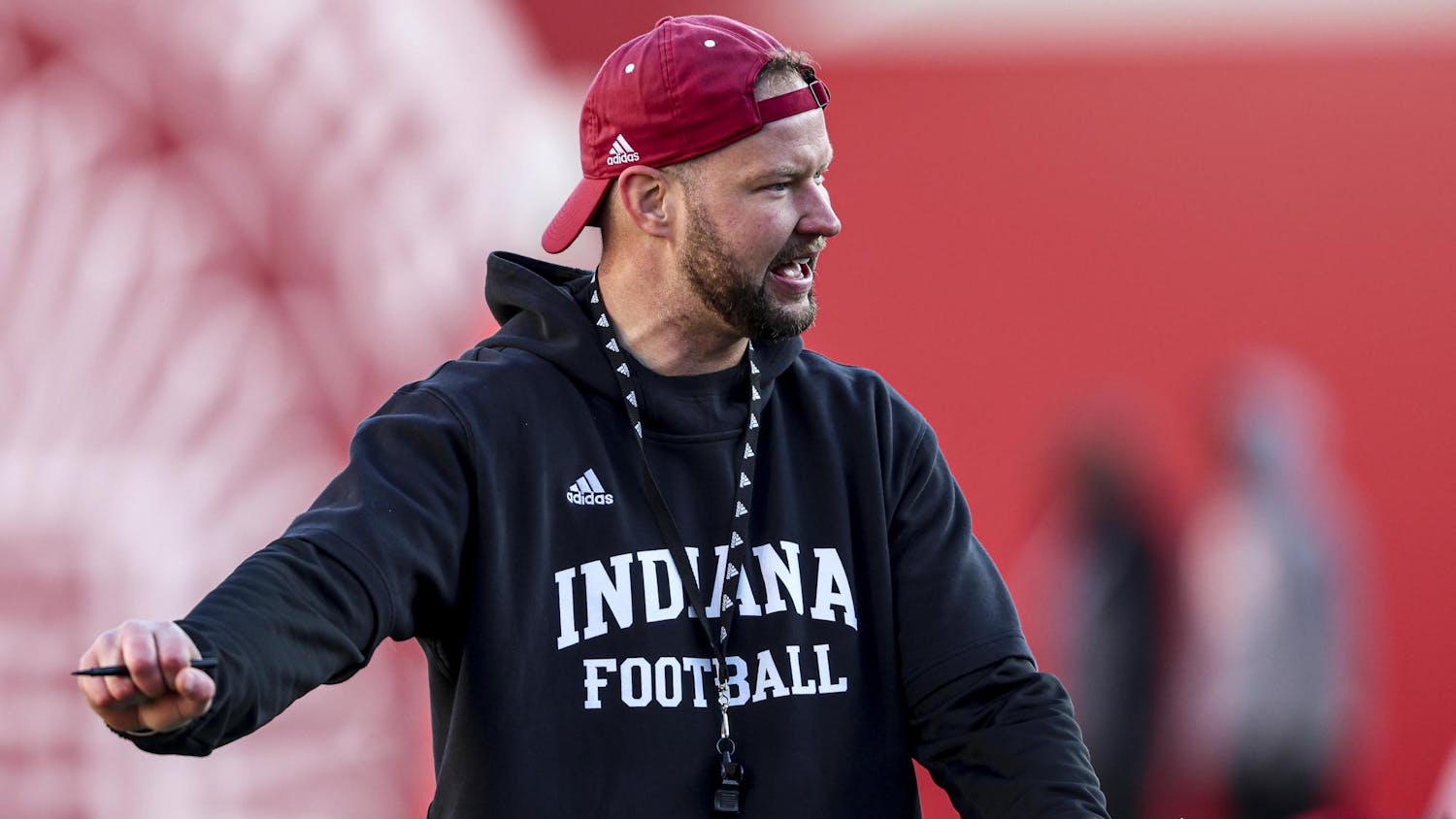In a cheerfully decorated corner of the Monroe County Public Library, a dozen young children crowded around IU graduate students Patrick Schoettmer and Aymen Elsheikh as they introduced the first two letters of the Arabic alphabet, alef and ba.\n"'Alef' is for 'arnab' ('rabbit')!" Schoettmer said as the children hopped around the room and gave each other bunny ears.\n"Ba" is for "baqara," or "cow," he said, and the teachers' voices were drowned out in a din of mooing as they passed around large foam cutouts of the letters. The children also learned the names for colors beginning with "alef" or "ba," such as "akhdar," for "green," and "banafsaji" ("purple"). Competing for Reese's Pieces candy, they shouted out the colors of construction paper sheets, blocks, their own clothing and other various objects in the room. \nEach week, up to 40 children and their parents gather in the library's Preschool Exploration Center to participate in the Alef Ba program, said Patty Calleson, the library's children's \nseries manager.\nWhile some of the children speak at least some Arabic at home with one or both parents, the majority who come to the lessons have no family connection to the language, Calleson said. These parents hope to broaden their children's exposure to language in general through programs such as Alef Ba or the Say It in Spanish series also taught at the center.\n"New brain research shows that children absorb language at a very early age, much younger than previously thought," Calleson said. "If we can provide an atmosphere where they're exposed to print, stories and language, even at this age, they will go to school ready to read. ... The kids will be comfortable around books and will become lifelong learners."
Development\nAlef Ba grew out of an informal study group organized by local Muslim converts seeking Arabic instruction for their children, but the lessons floundered over scheduling difficulties and a lack of volunteer instructors within the community. In early 2006, while attending a Middle Eastern arts exhibit at the library, Naomi Spector spoke with library staff about the difficulties the program was having. Spector, the assistant outreach coordinator of the IU Middle Eastern and Islamic Studies Program and a graduate student in the Department of Near Eastern Language and Cultures, offered University resources to help. \nThe Middle Eastern and Islamic Studies Program and the Department of Near Eastern Languages and Cultures organized the search for a team of graduate-student teachers to develop the Alef Ba curriculum, Spector said.\nThe library offered two work-study positions and by early fall hired Schoettmer, a doctoral student in NELC, and Elsheikh, a doctoral student in education who is an Arabic speaker and a native of Sudan. While neither had taught young children before, they studied the guidelines of the national Public Library Association's "Every Child Ready to Read" initiative and received training from the IU Campus Children's Center for preschoolers. The two then developed their own curriculum for Alef Ba, focusing on the hands-on teaching methods crucial to this age group they \nhad researched. \nThe program, promoted by the library through its children's services series, began in October 2006. Other NELC graduate students volunteer as classroom assistants; fluency in Arabic is not required to volunteer, but at least some knowledge \nis preferred.
Steady progress\nAfter the alphabet lesson, the children settled down for story time. Elsheikh read an Arabic version of the children's book "Chameleon Races," translating each page into English as he went.\nLater, after a review of numbers, food vocabulary and basic prepositions that had been introduced in previous sessions, he read "The Very Hungry Caterpillar," substituting these words in Arabic without translation as Schoettmer acted out the story with a sock puppet.\n"We read 'The Very Hungry Caterpillar' every week and substitute a few new words each time," Elsheikh said. "We will have the whole book translated by the end of the semester."\nMost of the children were shy about speaking Arabic with strangers, but 4-year-old Yusuf easily introduced himself, his 3-year-old brother Zakariya and his mother, Rania. \n"He goes to a Sunday school program to learn to read," Rania Noffal said, "but I like this program for him too. They make reading Arabic books fun, and playing together encourages them to speak Arabic with other kids their age."\nMany of the children, native speakers or not, were more interested in playing with the alphabet blocks than in sitting still for a language lesson. But all the parents agreed the exposure was beneficial to the children's intellectual and educational development.\nNext Saturday morning they will learn "ta" and "tha," the third and fourth letters of \nthe alphabet.





